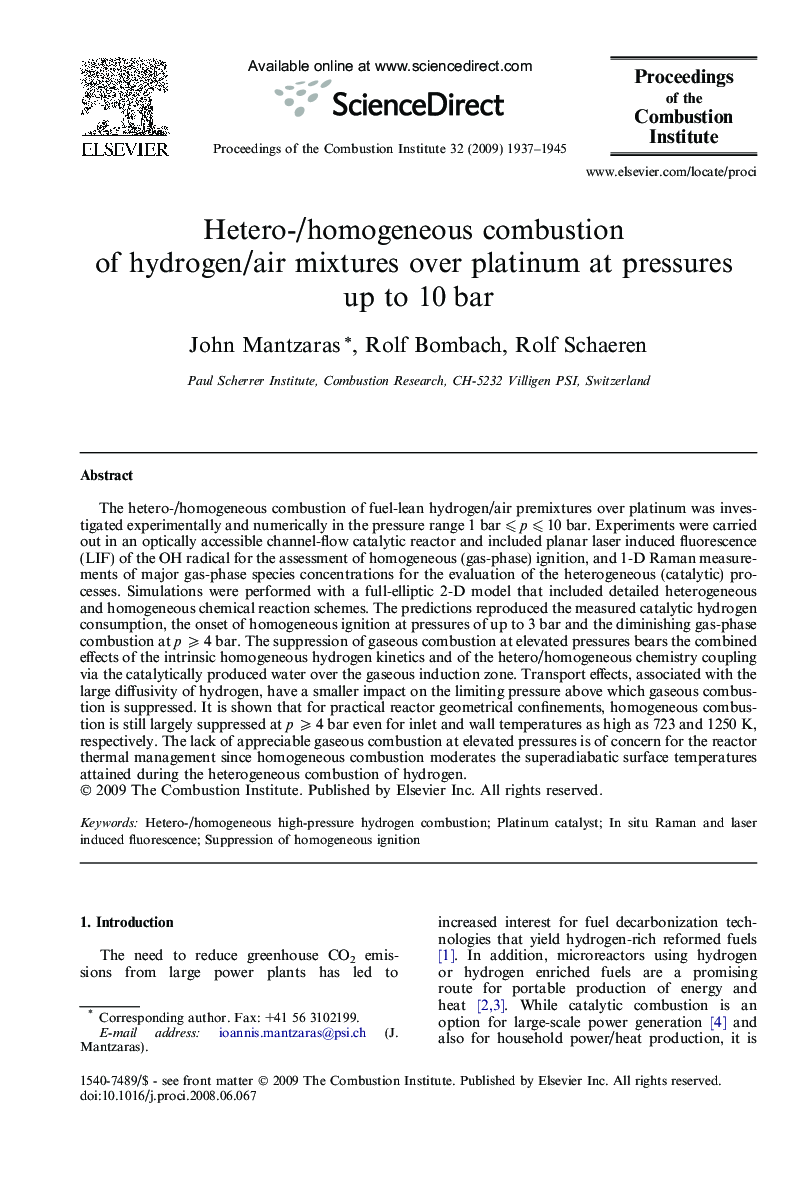| Article ID | Journal | Published Year | Pages | File Type |
|---|---|---|---|---|
| 241044 | Proceedings of the Combustion Institute | 2009 | 9 Pages |
The hetero-/homogeneous combustion of fuel-lean hydrogen/air premixtures over platinum was investigated experimentally and numerically in the pressure range 1 bar ⩽ p ⩽ 10 bar. Experiments were carried out in an optically accessible channel-flow catalytic reactor and included planar laser induced fluorescence (LIF) of the OH radical for the assessment of homogeneous (gas-phase) ignition, and 1-D Raman measurements of major gas-phase species concentrations for the evaluation of the heterogeneous (catalytic) processes. Simulations were performed with a full-elliptic 2-D model that included detailed heterogeneous and homogeneous chemical reaction schemes. The predictions reproduced the measured catalytic hydrogen consumption, the onset of homogeneous ignition at pressures of up to 3 bar and the diminishing gas-phase combustion at p ⩾ 4 bar. The suppression of gaseous combustion at elevated pressures bears the combined effects of the intrinsic homogeneous hydrogen kinetics and of the hetero/homogeneous chemistry coupling via the catalytically produced water over the gaseous induction zone. Transport effects, associated with the large diffusivity of hydrogen, have a smaller impact on the limiting pressure above which gaseous combustion is suppressed. It is shown that for practical reactor geometrical confinements, homogeneous combustion is still largely suppressed at p ⩾ 4 bar even for inlet and wall temperatures as high as 723 and 1250 K, respectively. The lack of appreciable gaseous combustion at elevated pressures is of concern for the reactor thermal management since homogeneous combustion moderates the superadiabatic surface temperatures attained during the heterogeneous combustion of hydrogen.
